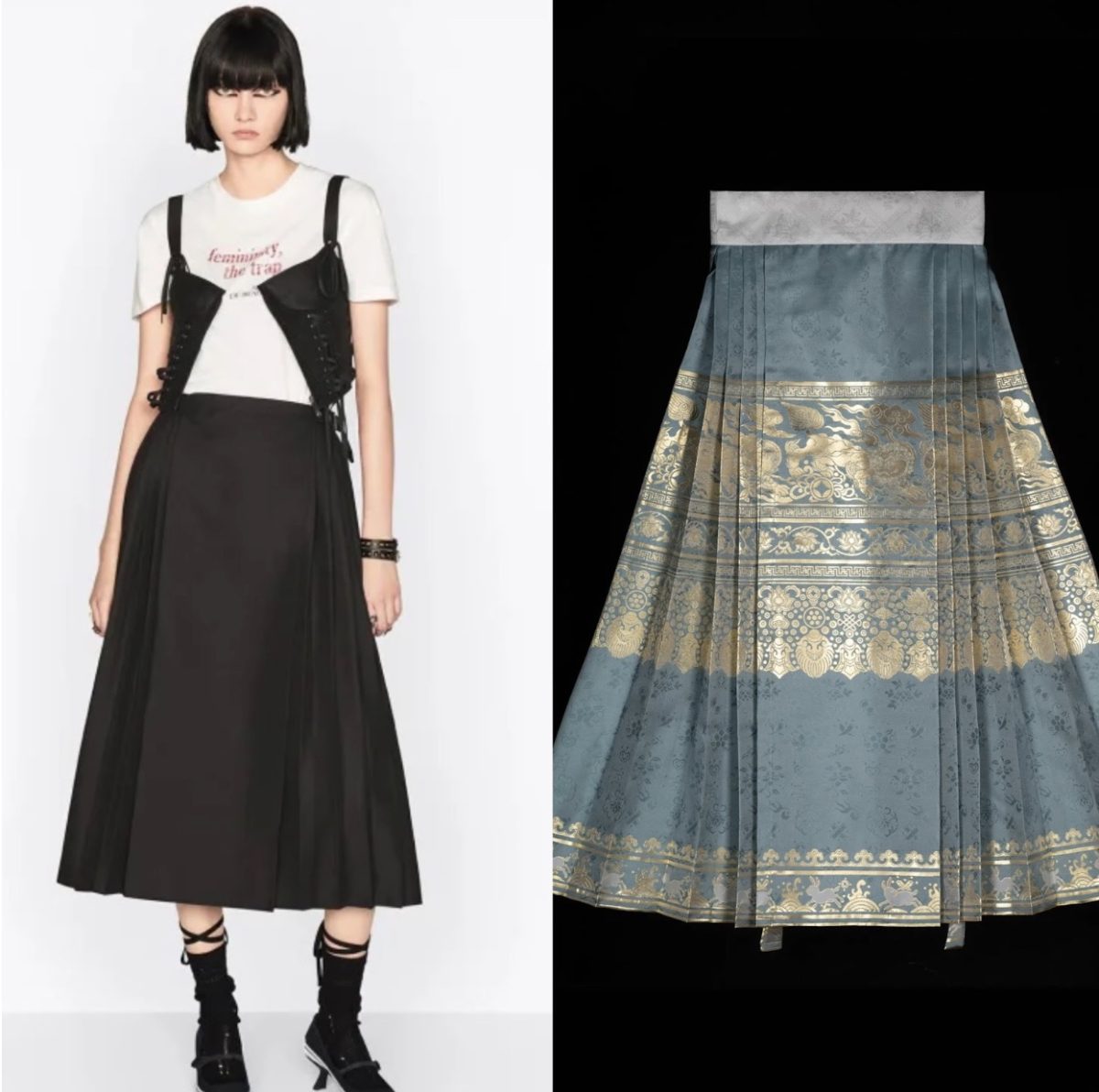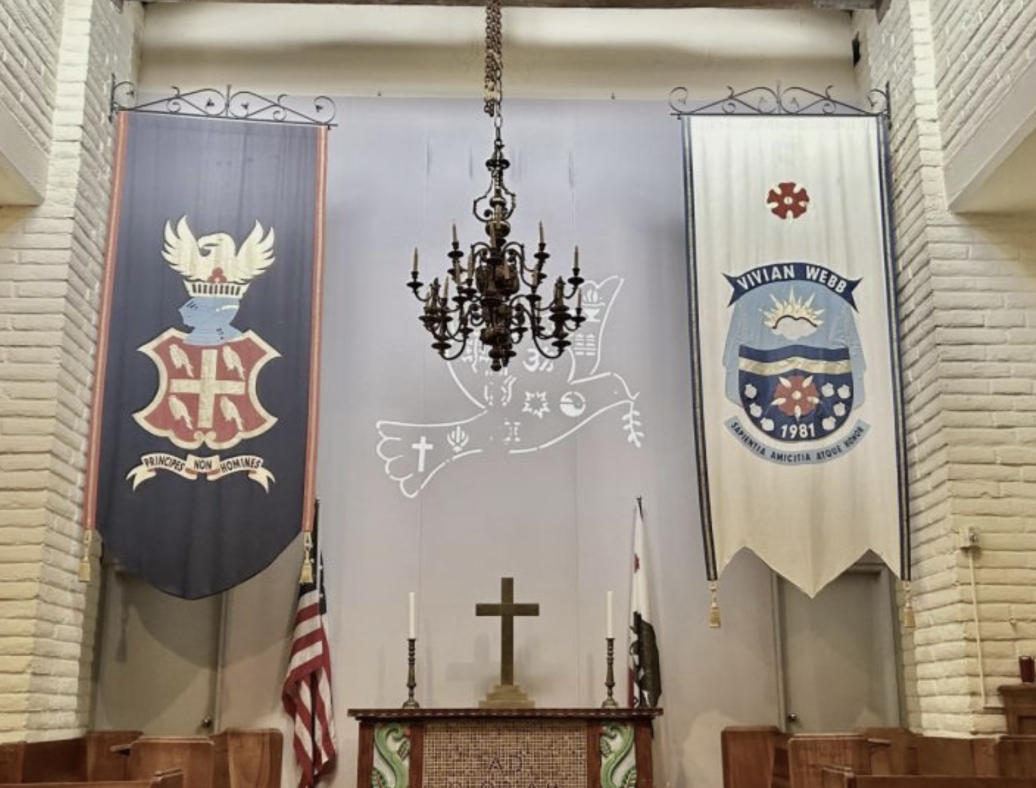As an international student, I never would have thought that the traditional outfit I wore to the Traditional Asian Clothing Fashion Show at Webb and for the Lunar New Year community dinner celebration would one day become the “hallmark silhouette” of a prestigious fashion house like Dior. In July of 2022, Dior introduced a $3,800 pleated wool and mohair skirt, describing it as a “hallmark Dior silhouette” on their website. The skirt’s fold and design are identical to those of the Ming dynasty’s mamianqun, a historic Chinese traditional garment. Dior simply removed the skirts from its website in mainland China without any public remarks or apologies.
Dior’s action is a classic example of cultural appropriation, the inappropriate or unacknowledged adoption of an element or elements of one culture or identity by members of another culture or identity, typically when members of a dominant culture appropriate from minority cultures. Dior –– a highly influential fashion brand –– adapted a Chinese garment, raised the price to over 100 times that of Chinese designer brands, and attempted to persuade customers to purchase its “original design” rather than authentic mamianqun at a lower price and higher quality from Chinese designers. Ironically, Dior’s $3,800 mamianqun skirts are the plainest on the market, compared to those of Chinese designer brands that, for only around $100, incorporate embroidery and traditional Chinese gold weaving techniques.
In recent years, cultural appropriation has been rationalized by some as a form of positive cultural communication and a critical aspect of humanity. Mary Edoro, editor of the fashion publication BellaNajia, argues that cultural appropriation offers people opportunities to explore minority cultures: “Cultural appropriation, when done in a good way, makes us appreciate things we might typically ignore.” Maggie Strauss, one of the winners of the 6th New York Times editorial contest in 2019, considered the people who accused Zara of stealing lungis and referring to them as a “hippie look” to be “America’s politically correct crusaders”. According to Maggie Strauss, cultural appropriation is similar to syncretism, the blending and assimilating of various formerly distinct civilizations. Cultural appropriation is by definition insulting; yet, cultural references should be founded on respect for and acknowledgment to the originating culture. I agree that cultural dialogue promotes human growth and aids in cross-cultural learning. Cultural appropriation, in my opinion, entails removing significant facets of my identity without recognizing their source. Because they are unfamiliar with traditional Chinese mamianqun, my American acquaintances assume Dior’s new skirts are “hallmark Dior silhouettes,” which makes me feel as though my identity is being misconstrued and disrespected.
The fashion industry is “at times guilty of cultural appropriation”. According to Burak Cakmak, the dean of the School of Fashion at Parsons School of Design, more fashion companies position themselves as value-driven businesses and ignore the importance of understanding the historical and cultural contexts of their design to assess what might be offensive, inappropriate, or simply without permission. The widespread cultural appropriation in the fashion industry shows society’s lack of respect and awareness of minority cultures, and shouldn’t be excused by rationalizing that ignorance. Even if the appropriation is committed unintentionally by fashion designers trying to draw inspiration from more diverse cultural backgrounds, it could cause misunderstandings and distortion of the appropriated culture.
Sincere respect and comprehension, in my view, would be the answer to the problem of cultural appropriation. There is a better way to prevent cultural appropriation than just hiring a diversity officer who “explores” different cultures and using non-white models for magazine covers. Having more personnel from racial minority groups would be more beneficial in this regard. Only representation that accurately represents and gives credit to the original culture can develop cultural diversity. I would feel more pride if Dior acknowledged the Chinese mamianqun as its source of inspiration before releasing the skirts.







![Many Webb students spend their free time in the library watching a popular TV show like Riverdale and Euphoria. “Based off what I’ve seen, like in Euphoria, because the actors are older, they don't showcase an actual high school life properly,” Sochika Ndibe (‘26) said. “Since [the actors] are older [and] playing a teenager, from a girl’s perspective, it is going to make you think you should look more developed at a young age.” The actor, who plays Veronica Lodge, was 22 years old at the time of filming.](https://webbcanyonchronicle.com/wp-content/uploads/2025/03/Antecol-Media-affects-how-society-functions-graphic-1200x900.png)

CYNTHIA LOU | Oct 8, 2023 at 3:46 PM
I’m glad this is a sign of Chinese culture being appreciated by and flourishing around the entire world. But you are right; they should not be doing this without giving credit to the original producers. Industries should be aware of this.